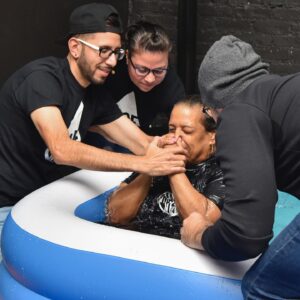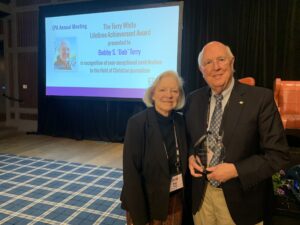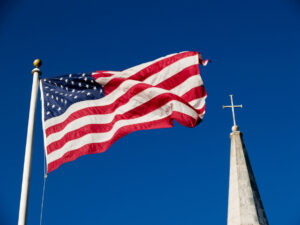
WASHINGTON (BP)–The fate of partial-birth abortion as a legally protected procedure rests with Anthony Kennedy.
At least, that appears to be the assessment of many observers on both sides of the abortion issue. As goes the associate justice, so goes the Supreme Court in determining whether Congress can outlaw the gruesome mid-pregnancy abortion method, they say.
Kennedy was indeed the focus of attention from reporters and observers as the high court heard oral arguments Nov. 8 in the Bush administration’s effort to convince the justices to overturn lower court decisions striking down a 2003 law banning the procedure.
The Partial-birth Abortion Ban Act, which was passed by about two-thirds of both houses of Congress, bars a procedure also known as D&X, dilation and extraction, typically used in the fifth or sixth month of pregnancy. In the method as normally practiced, an intact baby is delivered feet first until only the head is left in the birth canal. The doctor pierces the base of the infant’s skull with surgical scissors before inserting a catheter into the opening and suctioning out the brain, killing the baby. The technique provides for easier removal of the baby’s head.
Four members of the court -– Associate Justices John Paul Stevens, David Souter, Ruth Bader Ginsburg and Stephen Breyer — voted with the majority in 2000 to strike down a Nebraska ban on partial-birth abortion. Sandra Day O’Connor, the fifth vote in the majority, has since retired.
Kennedy would appear to be the most likely of the remaining five justices to join them, even though he wrote a strong dissent in that decision, Stenberg v. Carhart. Otherwise, he has sided with abortion-rights defenders on the court in the past.
Associate Justices Antonin Scalia and Clarence Thomas were in the minority in the earlier case and have indicated no inclination to switch sides. Chief Justice John Roberts and Associate Justice Samuel Alito, who replaced O’Connor, are expected to uphold the partial-birth abortion ban based on their records at the appellate level as strict constructionist judges.
After the oral arguments, different observers had different takes on Kennedy’s questioning.
“I’m encouraged,” said Jordan Lorence, senior counsel for the Alliance Defense Fund. “Justice Kennedy, back in the Stenberg case in 2000, was very passionate in his opposition to partial-birth abortion. And although he asked studied questions today, I think that he indicated that he retains basically what he said in that opinion, and nothing dissuaded him.”
Colby May, senior counsel for the American Center for Law and Justice, told Baptist Press outside the court building, “I am hopeful that [Kennedy] will follow the same rationale that he provided in his dissent in the Stenberg decision, and I think if he does, then we have every reason to be optimistic.”
May said he thought the arguments left Kennedy “recognizing that line drawing [by Congress] is something that is appropriate and
OK for the government to do, and drawing the line between classical, historical abortion and infanticide is an appropriate line to draw.”
Lorence told Baptist Press he thought the “overall dynamic” among the justices during the arguments provided a hopeful indicator. Alito asked no questions during the two hours, and Scalia, often an active participant, rarely spoke.
“[T]he five that have the votes weren’t talking that much, and the ones who seemed like they were really trying to convince a fifth vote to come over were the people who were in the majority in Stenberg,” Lorence said. “So, in other words, the pro-partial-birth abortion justices seemed to be the ones that were trolling for a fifth vote, and that’s a good sign that [the justices] are going to leave this to [Congress].”
Priscilla Smith, who represented Nebraska abortion doctor Leroy Carhart in the arguments, had a different take.
She told reporters the justices “seemed in the end not at all persuaded by the idea that the court should defer to Congress in judgments of these issues, but instead that the court is the ultimate arbiter of the scope of constitutional rights and the court decides when women’s rights are being violated…. The court was taking these very, very seriously, and I thought Justice Kennedy, just like the other justices, was paying a great deal of attention to the discussion of the seriousness of the health risks here, issues about reducing risks of uterine perforation, risks of serious, catastrophic complications and risks to women with particular underlying medical conditions as well.”
Lyle Denniston, a veteran Supreme Court reporter writing for Scotusblog.com, said Kennedy, “proceeding calmly, cautiously and analytically, left the clear impression on Wednesday that his vote may be available” to invalidate the partial-birth ban.
In his 2000 dissenting opinion, Kennedy said Nebraska “chose to forbid a procedure many decent and civilized people find so abhorrent as to be among the most serious of crimes against human life, while the state still protected the woman’s autonomous right of choice as reaffirmed in [the 1992 Casey v. Planned Parenthood decision]. The court closes its eyes to these profound concerns.”
In two hours of arguments, U.S. Solicitor General Paul Clement did not challenge the high court’s 1973 Roe v. Wade opinion legalizing abortion but urged the court to defer to Congress’ findings as reasonable in seeking to prohibit a specific method of abortion.
Congress had an interest “in maintaining a bright line between abortion and infanticide,” Clement told the justices. Congress determined after six hearings over four terms “that partial-birth abortions are never medically necessary, pose health risks and should be banned,” he said.
Meanwhile, Smith and Eve Gartner, representing the Planned Parenthood Federation of America, challenged Congress’ findings, saying the procedure was sometimes medically necessary, had not been rejected by a consensus of physicians and was taught at some major medical schools.
Women should be able to receive abortions by the method banned by Congress when a doctor believes it is best, they argued.
The arguments actually involved two appeals court rulings on the federal ban. The first hour focused on Gonzales v. Carhart, an appeal from the Eighth Circuit Court of Appeals in which the law was invalidated based on its lack of an exception for the health of the mother. The second hour consisted of a consideration of Gonzales v. Planned Parenthood, out of the Ninth Circuit, which also said the ban imposes an undue burden on women and is too vague.
A member of the audience interrupted the proceedings about three-fourths of the way through the first hour by shouting out his opposition to abortion before being removed by police. Pro-life and abortion-rights advocates demonstrated outside the building before, during and after the arguments.
Thomas did not participate in the arguments because of illness. Roberts said Thomas would take part in the decision based on the briefs and the transcripts of the arguments, which are available on the Supreme Court website, www.supremecourtus.gov.
The court is expected to issue an opinion in the cases before it adjourns next summer.
The Southern Baptist Ethics & Religious Liberty Commission signed on to a friend-of-the-court brief in support of the ban in the Gonzales v. Carhart case. The U.S. Conference for Catholic Bishops wrote the brief, which was joined by other religious organizations as well.
The Southern Baptist Convention approved resolutions condemning the partial-birth procedure in both 1996 and 2002.
Among those filing briefs in support of the law were the American Association of Pro-life Obstetricians and Gynecologists, ACLJ, ADF, Christian Legal Society, Family Research Council and Focus on the Family.
Organizations filing briefs urging the court to strike down the ban included the ACLU, American College of Obstetricians and Gynecologists, NARAL Pro-choice America and the Religious Coalition for Reproductive Choice.
Congress approved the ban in 2003 with a 64-34 vote in the Senate and a 281-142 vote in the House of Representatives. Congress had twice adopted partial-birth abortion bans in the 1990s only to have President Clinton veto them. In both 1996 and 1998, the House achieved the two-thirds majorities necessary to override vetoes, but the Senate fell short.
After President Bush signed the bill into law in November 2003, abortion rights organizations quickly challenged it in three courts and blocked its enforcement. Federal judges in New York City, San Francisco and Lincoln, Neb., struck down the law. The lower court decisions were upheld by three-judge panels in the Ninth Circuit, based in San Francisco; Eighth Circuit, based in St. Louis; and Second Circuit, based in New York,
The judiciary’s requirement of an exception for a mother’s health has frustrated attempts to enact a meaningful prohibition on the partial-birth procedure. Until now, the dilemma advocates of the ban have been unable to solve is this: If they pass a partial-birth abortion ban without a health exception, the courts strike it down; if they approve a ban with a health exception, it is ineffective because of the judiciary’s definition of “health.”
In its 1973 Doe v. Bolton opinion, which accompanied the Roe decision, the Supreme Court defined maternal health so expansively it had the practical effect of permitting abortion for any reason throughout all stages of pregnancy.
–30–















